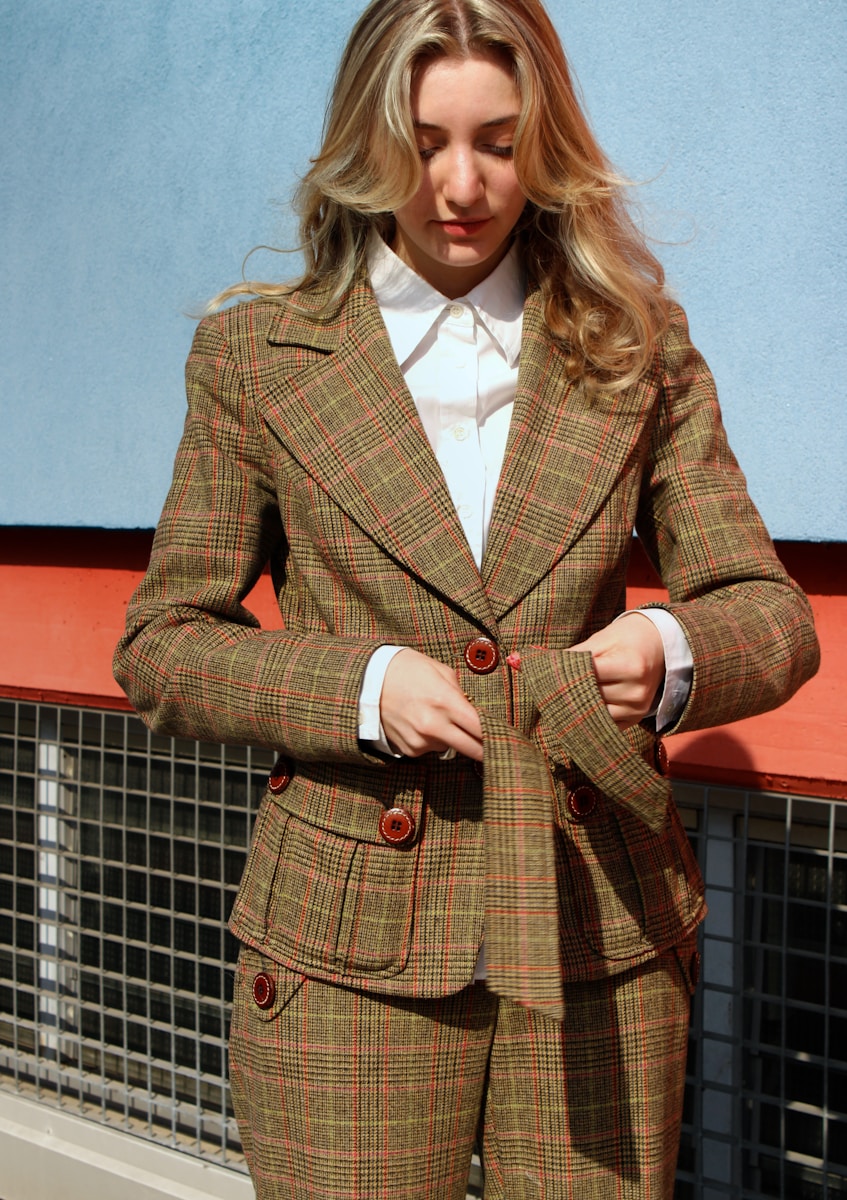Introduction: Why Texture Matters
When most people think about style, they reach for color or silhouette as the first descriptors. We talk about a “red dress” or a “boxy jacket,” but rarely about the way a garment feels against the skin or how its surface catches the light. Yet texture—whether fuzzy, smooth, coarse, or glossy—is one of the most primal aspects of material culture. It is the first thing infants notice when they grab a blanket, and the last thing we sense when we pull on a beloved sweater late at night. Texture communicates warmth, power, intimacy, and even rebellion. To be a texture lover is to recognize that what lies beneath the eye is just as important as what dazzles it.
The History of Touch in Fashion
Historically, societies have used texture as a marker of status and meaning. In medieval Europe, velvet and silk were reserved for elites not just because they were rare, but because their sensorial impact was unmistakable. Silk slipped luxuriously through fingers, velvet invited touch with its deep pile, and both signaled wealth before a word was spoken. Coarse wool or homespun cotton, by contrast, connoted labor, humility, or scarcity.
In the twentieth century, technological innovation democratized these textures. Synthetic fibers like nylon and polyester mimicked silk’s smoothness at a fraction of the cost. Fleece, developed from petroleum-based fibers, delivered the fuzzy comfort of wool without the itch. What was once exclusive became everyday—proof that texture is both cultural and technological, shifting as science evolves.
The Fuzzy Realm: Comfort and Nostalgia
Few textures carry the emotional pull of fuzziness. Think of the teddy bear that soothed childhood nights, or the mohair sweater that feels like a warm hug. Fuzzy textures offer psychological comfort, signaling safety and softness. This explains the surge of faux-fur jackets and sherpa-lined coats in recent years: they are more than fashion—they are wearable cocoons in an uncertain world.
But fuzziness is also a matter of rebellion. The shag carpet and fuzzy neon sweaters of the 1970s pushed against minimalist modernism, turning texture into excess. Even today, oversized furry boots or plush accessories inject a playful absurdity into otherwise polished wardrobes. To embrace fuzz is to embrace pleasure unapologetically.
Smooth Surfaces: Power and Precision
If fuzzy textures soothe, smooth ones command. A polished leather shoe, a silk tie, or a glass tabletop all communicate refinement and control. Smoothness suggests mastery: surfaces that have been tamed, polished, engineered. In design history, smoothness often coincides with modernist ideals—clean lines, shiny finishes, minimal interference.
Yet smooth does not always mean cold. The gliding touch of silk, the satiny drape of charmeuse, or the polished warmth of a wooden banister remind us that smoothness can seduce as well as intimidate. The balance lies in intention: smooth textures worn in boardrooms speak of professionalism, while smooth textures in bedrooms whisper intimacy.
In Between: Roughness, Grain, and the Raw
Life, of course, is rarely only fuzzy or smooth. Much of the world’s beauty lies in the textures that occupy the in-between spaces—linen with its slubs, denim with its grain, concrete with its grit. These surfaces tell stories of labor and imperfection. Unlike polished marble, rough granite reveals its natural origin. Unlike glossy silk, denim reminds us of work and resilience.
In contemporary fashion and architecture, these raw textures often serve as statements against over-refinement. Japanese wabi-sabi aesthetics, for instance, celebrate the imperfect and the unfinished. A rough ceramic bowl or a nubby wool coat carries the poetry of authenticity. Texture in these cases becomes philosophical: it teaches us to find beauty in the uneven.
Texture in Global Perspective
Texture’s significance is not universal but cultural. In West African textiles, the raised embroidery of agbada robes emphasizes dignity and craftsmanship. In South Asia, the crisp crunch of starched cotton saris signals freshness and respectability. In Japan, the smooth translucence of silk crepe (chirimen) contrasts with the rustic roughness of homespun cotton, each carrying its own meaning.
Even within a single society, texture marks identity. Punk culture embraced rips, safety pins, and distressed leather as tactile defiance against smooth bourgeois polish. Streetwear celebrates heavyweight cotton hoodies, prized for their density and structure. Luxury brands, by contrast, often continue to chase smooth leathers and silks as markers of timeless authority. To love texture is to love culture in its endless variety.
The Science of Feel
Behind every tactile sensation lies material science. Fuzziness often comes from fibers with a long pile—wool, faux fur, or brushed synthetics—that trap air, creating warmth. Smoothness arises when fibers are tightly woven or surfaces are polished, reducing friction. Roughness often signals irregularities in weave or fiber length.
Interestingly, neuroscientists have found that humans process texture both through physical sensation and through memory. We don’t just feel fuzz—we recall its associations with comfort. This dual processing explains why texture can trigger powerful emotions. A scratchy wool scarf may remind one person of cozy winters, while for another it may conjure childhood discomfort. Texture is as much about psychology as it is about physics.
Textures in Interior and Product Design
Beyond clothing, texture shapes how we experience spaces and objects. Interior designers use it to manipulate mood: plush carpets for coziness, smooth marble for elegance, matte walls for calmness. Tech companies obsess over tactile detail—consider the soft-touch finish of a smartphone case or the click of a keyboard key. Texture creates trust; it tells us whether an object is reliable, luxurious, or cheap.
Minimalist interiors, once dominated by smooth steel and glass, are increasingly softened with textured rugs, woven lampshades, and unfinished wood. The rise of biophilic design—bringing natural textures indoors—underscores our craving for touch in a digital age dominated by cold screens.
The Digital Challenge: Flatness and the Yearning for Touch
Speaking of screens, the digital era has created a crisis of texture. We live surrounded by glowing, flat surfaces—phones, tablets, laptops—that offer sight and sound but little tactile richness. This flatness has fueled a resurgence of texture in other areas of life, from the explosion of velvet couches on Instagram to the craze for chunky knit blankets. The more our lives move into intangible pixels, the more we crave tangible fuzz, grain, and grit.
Some designers are responding with haptic technologies—touch screens that simulate textures through vibration. But whether technology can truly replicate the complexity of touch remains to be seen. Texture is not just sensation; it is material reality.
Sustainability and the Future of Texture
Texture also plays a role in sustainability. Natural fibers like hemp and linen offer raw, irregular textures that stand apart from uniform synthetics. Recycled materials often introduce new tactile possibilities—denim reborn as paper-like composites, or plastic bottles spun into surprisingly soft fleece. Future innovations may deliver entirely new feels, such as lab-grown leathers that mimic smooth calfskin without animal harm, or 3D-printed fabrics that blur the line between fuzzy and smooth.
As consumers, our tactile preferences shape these futures. Choosing a rough hemp tote over a plastic-coated bag isn’t just about style—it’s about aligning touch with ecological ethics. Texture becomes a moral language as much as an aesthetic one.



